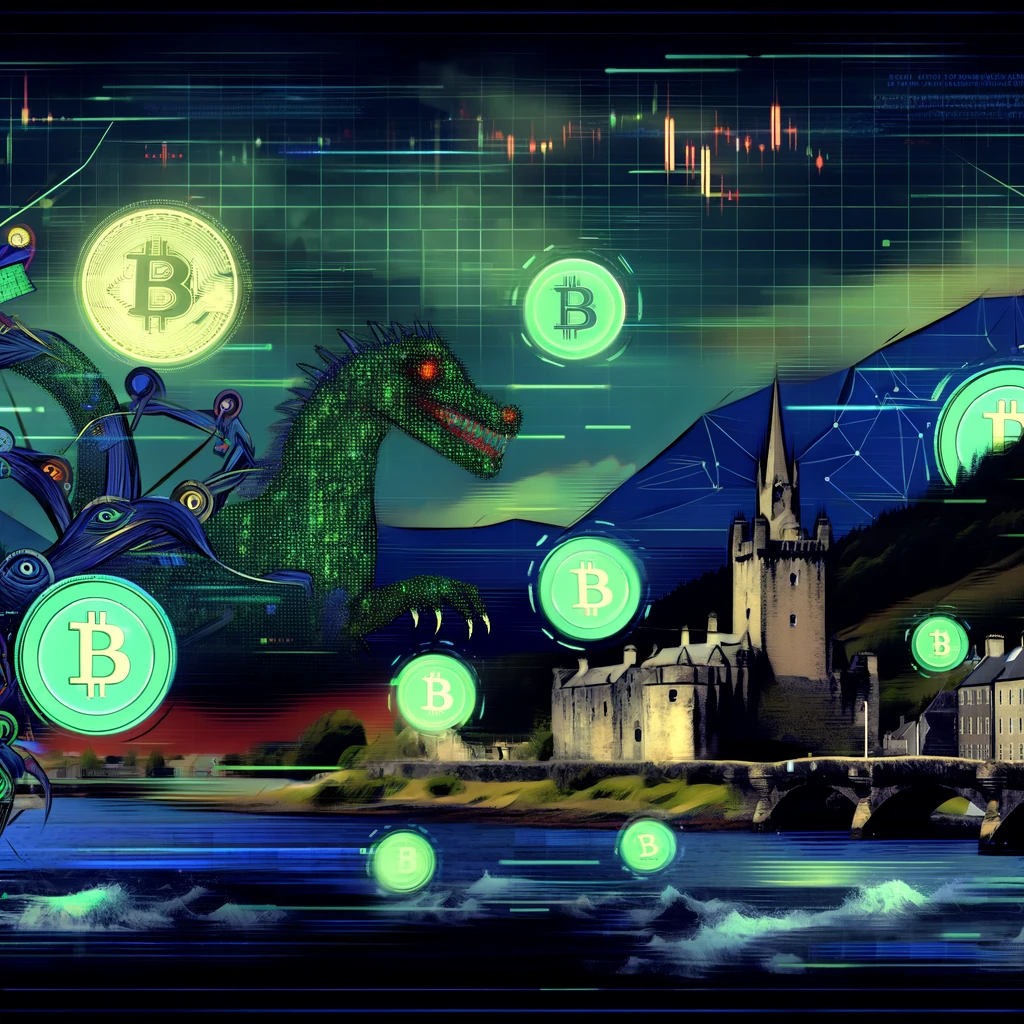Forget the misty lochs and rugged highlands usually associated with Scotland. Let’s dive into a swampier terrain, where the only dragons lurking are digital, and the treasure consists of laundered cryptocurrency. This isn’t your typical Scottish tale of heroism and valour; it’s the modern-day equivalent of a heist, but with a digital twist. At the heart of this saga lies an 83-acre plot of land outside Edinburgh, serving as the stage for a narrative that intertwines real estate with the shadowy world of crypto laundering.
A Sketchy Blueprint for Wealth
Our story begins not with “Once upon a time” but with a barren field in West Lothian—a site for sore eyes rather than sorely needed homes. Michael James Burke, a Dubai-based real estate connoisseur, casts himself as the protagonist of this narrative. Through his Alba Group, he peddles dreams of housebuilding ventures in Scotland that mask a far murkier reality.
The London trial of Jian Wen, convicted of laundering Bitcoin from a colossal £5bn fraud in China, peeled back the curtain on Burke’s operations. It’s not every day that you stumble upon a scheme that promises investors a 100% return on paper by fiddling with land valuations and purchase prices. But here we are, staring at a playbook that would make even the boldest of fraudsters blush.
Burke’s messaging, revealed during the trial, illustrates a brazen approach to wealth creation—or more accurately, wealth fabrication. The lure of quick returns through Scottish land parcels was dangled before Wen as a golden opportunity. Yet, beneath this glittering surface lay a scheme that the prosecution at Southwark Crown Court didn’t hesitate to label as outright fraudulent.
From Digital Vaults to Scottish Fields
The web of deceit spun from this Scottish plot ensnares more than just land and crypto. It’s a tapestry that includes high-profile connections, from renowned jockeys to royal business partners, adding layers of intrigue to the tale. Burke, leveraging his illustrious links, presented himself as a jack-of-all-trades in the shadow economy, offering solutions that spanned across continents and asset classes. The narrative weaves through various escapades, from attempts to acquire a £12.5 million London property to the conversion of Bitcoin into tangible assets like property, jewellery, and even prepaid cards.
Central to this plot is the conversion of cryptocurrency into assets that are far easier to parade as legitimate. Burke’s role in facilitating this transformation for Wen, under the guise of solving her problems, is emblematic of the broader challenges facing global financial systems today. The saga stretches from the Seychelles to Switzerland, with Burke’s operations aiding in the disposal of 92 Bitcoins into assets less likely to raise eyebrows.
Yet, it’s the “Scottish scheme” that stands out for its audacity. Offering a guaranteed 100% return under the guise of land development projects, Burke’s proposals did not just bend the rules of investment—they shattered them. The allure of substantial profits, with a dash of creative accounting, makes for a compelling, if not ethical, proposition.
Alba Group’s role in this narrative, with its advertised housebuilding opportunities and connections to S Developments Limited, adds a layer of legitimacy to the scheme. Yet, as the court proceedings reveal, there was more mirage than miracle in these Scottish lands. Despite the grand visions of construction and development, the reality on the ground tells a different story. Few houses stand as testimony to the promised developments, with Edmonstone being the lone beacon of any construction activity.
The land, once envisioned as a bustling community, remains largely untouched—a silent witness to the grand plans that never came to fruition. Burke’s portrayal as a maverick investor, promising to turn Bitcoin into bricks and mortar, underscores the growing challenges in tracing and legitimizing digital wealth.




